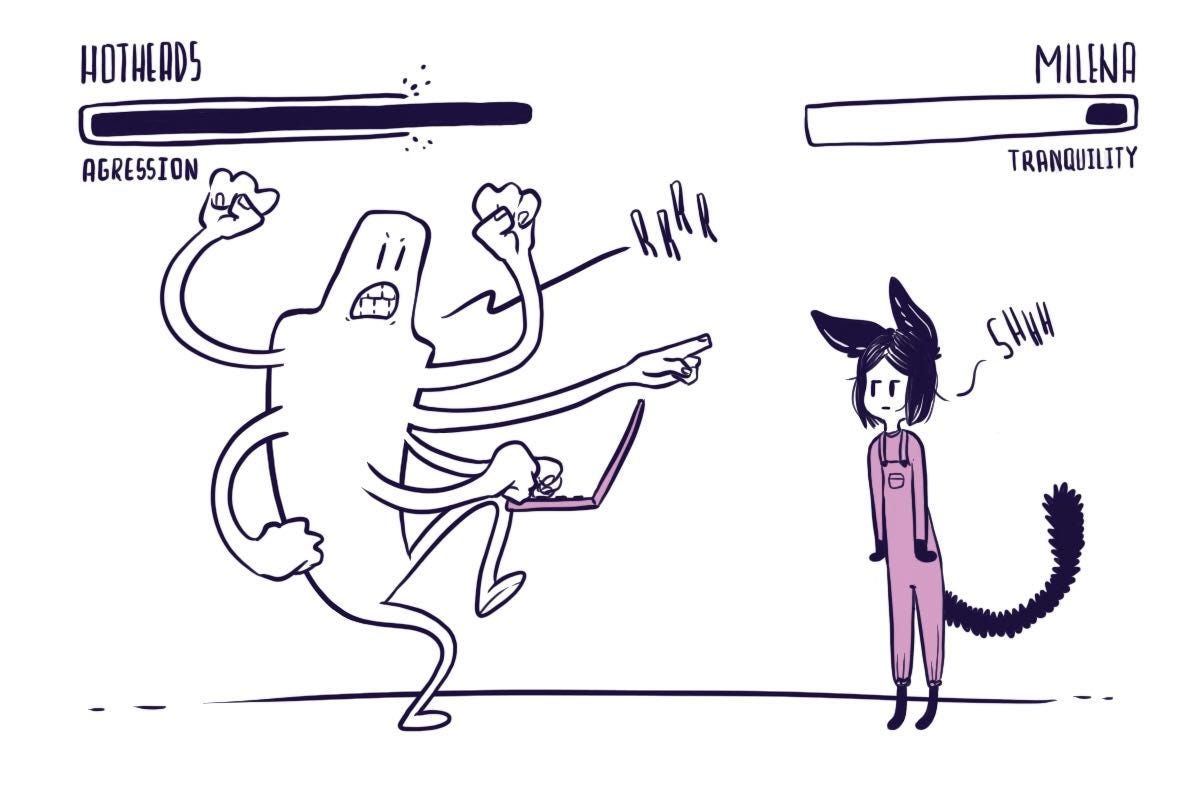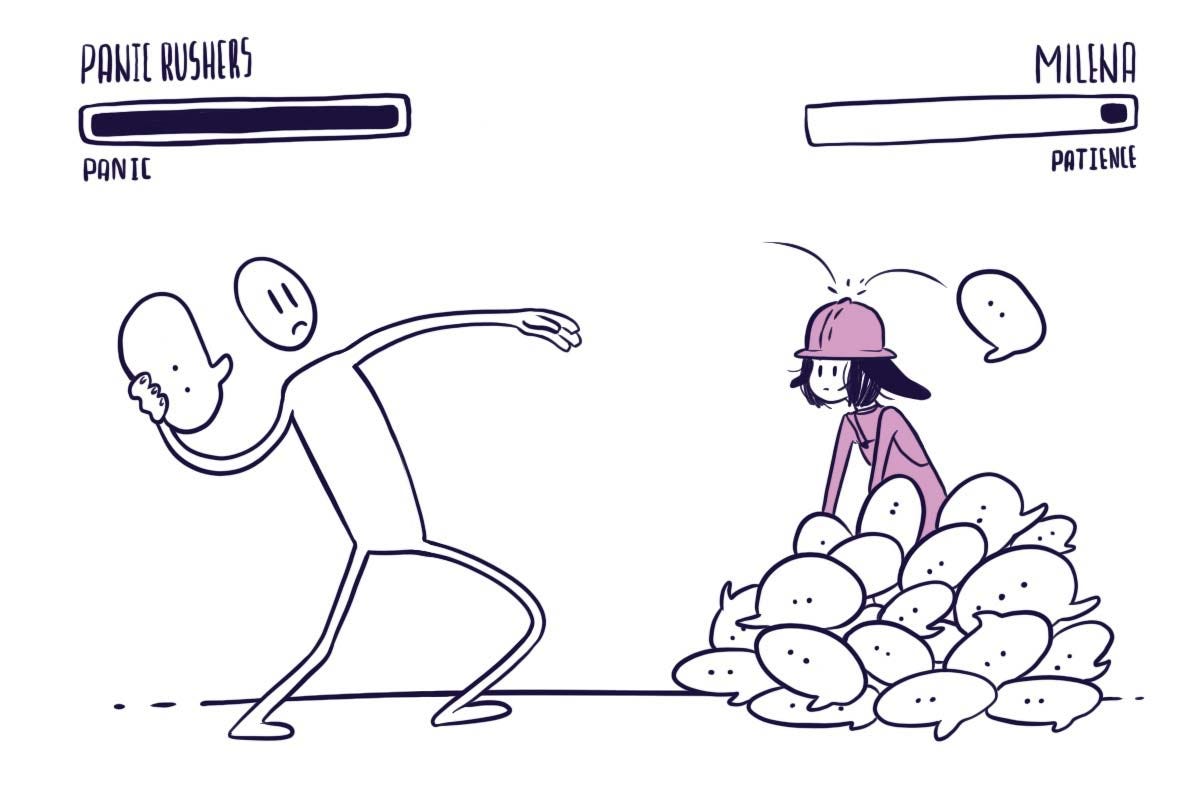
Communication surrounds us, and it’s so deeply rooted in our everyday life that we barely make any efforts to initiate a new dialog. Especially online. It turns out that self-expression on the internet is way more comfortable than in real life (we all understand the reasons for it).
Guided by this idea, one might assume that any position, connected with online communication (SMM, blogging, Patreon, crowdfunding, online marketing or any other activity involving work with an audience) is something any person would nail.
Let me assure you, it’s not as easy as it seems. Internet reality plays by its own rules and you’re obliged to know them and understand what to do when dealing with people online.
I have been working as a community support manager for more than two years now. It’s a massive period of time measured by the amount of communication I initiate every single day, sending cooperation offers to designers, replying to comments and reviews, creating social media posts and updates. But technical support is the sphere I always have to tinker with the most.
I’m not going to pretend that my job is all smiles and happiness. I meet rude people as many times as I meet sweethearts (sometimes even more, or at least it seems like it). And everyone comes to me with their different-levels-of-difficulty problems.
All people are unique, no doubt about that, but still, the experience has allowed me to shape the special types of help-seekers and define the best way of dealing with them.
Modest humblers
It’s even a little cute how modest humblers are too careful about the things they’re going to do. They’re afraid to press the wrong button, to pick the wrong license even after reading the terms, to sign up for a newsletter, etc.
They remind me of kids figuring out how new toys work. Well, I mean those modest kids, not the ones ready to disassemble everything into pieces, risking to never put everything back together properly.
But be careful. Don’t let this analogy give you the right to talk to humblers like they’re babies. Nobody likes being patronized, especially by some strangers online. You need to make these people feel comfortable by putting a light on every dubious topic. It’s you who must know everything about the website or marketplace, not them.
It’s better to give an exhaustively detailed answer about all the points and beyond. And by beyond I mean anticipate — think of the highly possible problems people might face — and warn them in advance. One massive letter instead of several small ones will smash the humbler’s potential threats and save you a lot of time.
Hotheads
Let me be sincere here, this is the most unpleasant type of them all. Hotheads are very aggressive, rude and impatient.
They first make some silly mistakes due to inattention or haste, then blame it on everything around. Hotheads always suspect platforms in plotting against the users, trying to see scum everywhere.
I implore you to keep it together no matter what accusations fly towards you (there’ll be insults too, be prepared).
Apart from a detailed answer and instructions, try to make everything transparent. Attach screenshots. Explain the subtleties.
Don’t make it sound defensive or overcrowded with sweetness. Hotheads consider such things as dust in the eyes — one of your sly techniques to trick them, obviously, duh!
A reserved style, thoughtful explanations, and you won’t piss a hothead off even more. In the best scenario, a hothead can even apologize in the end, but it’s as rare as unicorns.
Panic rushers
The previous types may include the traits of panic rushers, but they’re unpredictable and that’s their main evil power. It all starts with you checking the morning emails and finding one help request. Then another one. Then comment or two.
After that, you see a Facebook notification and Instagram direct message. All from the same person. The cherry on this cake of panic is an irrelevant review about your work, partly repeating the messages you’ve already read on all your social media.
Panic rushers don’t spend time waiting for help. Instead, they go and mess things up even more, turning a small issue into a tremendous crisis, which you’ll be solving for the rest of the day. You just grin and bear it.
What can be done to minimize the hustle?
Collect all the requests in one place, on one social network instead of responding to every message. The remaining comments must be replied to separately. Just mention that you’ve sent a private message to the person. Don’t spit it out there, it’ll make other users confused.
Think of panic rushers and their actions as if you were a rescuer, dealing with the consequences of a natural disaster: The damage was done, now you can only clean it up.
Cheatsheet of helpful tactics
Every website or platform has its own features, defining the nature of support requests. I’ve made a list of tips, helping me cope with everyday struggles. I hope they’ll be your candle, leading to the light from the dark room of community support.
- Respond to every single person – Both negative and positive requests should be supplied with a reaction. If a person has initiated communication, you have to keep up with it until the end.
- Promptness – Replies must be up-to-date and take as little time as possible. The quicker you answer, the more credibility points your platform gets from your audience.
- Stick to one tone and style –Once you find a way with your audience through a particular tone and style of communication, go with it all the time and let it be omnipresent. Otherwise, your audience will be awarded a dissonance by this uncertainty. Keep in mind that an informal tone is more convenient and is likely to be appreciated by all.
- Be kind and empathetic – People come up with questions even about the most obvious, simple things. Despite the fact that these questions can be asked in different forms of aggression or polite inquiries, you should respond equally — open-hearted. In case of receiving a series of repeated questions, think of creating a pinned message (if it’s technically possible) or a new point in your FAQ list. Message templates are also good aids but avoid misusing them.
- Don’t succumb to provocative messages – You should be smart about the negative messages and critics (constructive and not so much). Cranky messages and comments can always be removed, especially if they contain strong language, irrelevant or misleading info, insulting others.
- Describe more – The more interesting the copy text, the higher the possibility of receiving feedback for it. People will be eager to ask questions, initiating communication.
This article was written by Milena Abrosimova, and illustrated by Milka Oxana. Milena is the Content Designer at TheDesignest, and she originally published this article on Better Marketing, a publication providing advice that works and covering digital and social media marketing, tools, and case studies. You can read the original article here.
Get the TNW newsletter
Get the most important tech news in your inbox each week.








